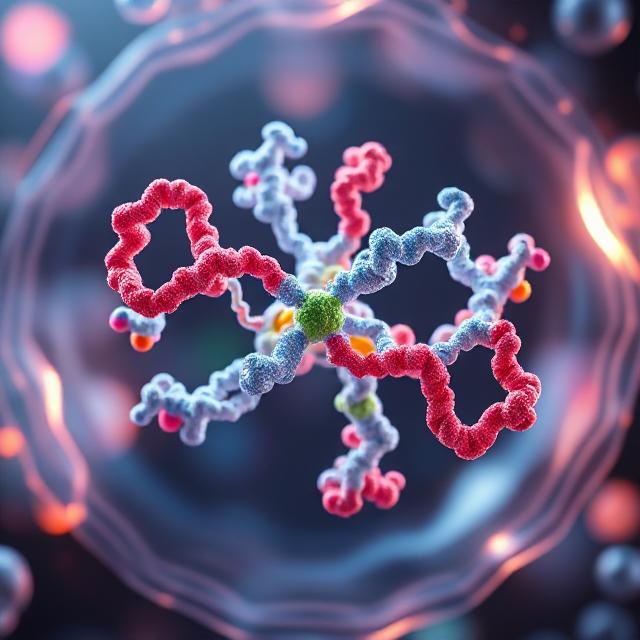What if artificial intelligence could design life itself?
In a ground-breaking achievement, researchers at the University of Washington’s Institute for Protein Design, led by Dr. David Baker, used deep learning to design a completely new protein from scratch – and it worked inside living human cells.
This research was published in Nature in October 2023 and used a powerful AI model called RFdiffusion, which builds on AlphaFold’s legacy but adds creative generation, not just prediction. This breakthrough, led by scientists, shows how AI is now entering the frontier of creating life’s building blocks-from nothing.

AI generated illustration inspired by synthetic protein design research.
From Code To Protein – With Zero Human Blueprint
Using AI models trained on millions of known proteins, scientists gave the AI a goal: design a novel protein that can bind to a specific human receptor.
The AI generated the amino acid sequence, predicted the 3D folding, and even optimized it for real biological conditions. When tested in labs-it worked
Why This Matters?
If AI can design working proteins:
- We could cure diseases with protein never found in nature.
- Create custom enzymes for recycling, energy, or food.
- Even design new forms of synthetic life in the future.
It’s like giving biology a new programming language-with AI as the coder.
A Glimpse Into Synthetic Biology’s Future
This isn’t just a medical marvel. It’s a revolution in how we understand evolution itself.
Nature took billions of years to evolve proteins. AI might take us to the next stage-in decades or less. This implications reach medicine, material science, and even the origin of life itself.
Sources:
Nature Journal, October 2023 – “Hallucinating Symmetric Protein Assemblies”
University of Washington – Institute for Protein Design